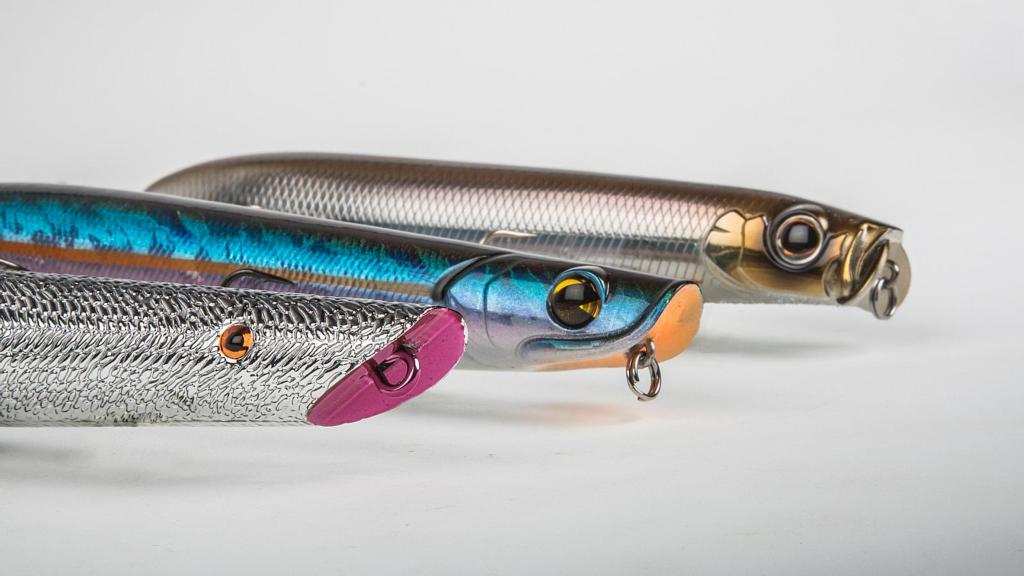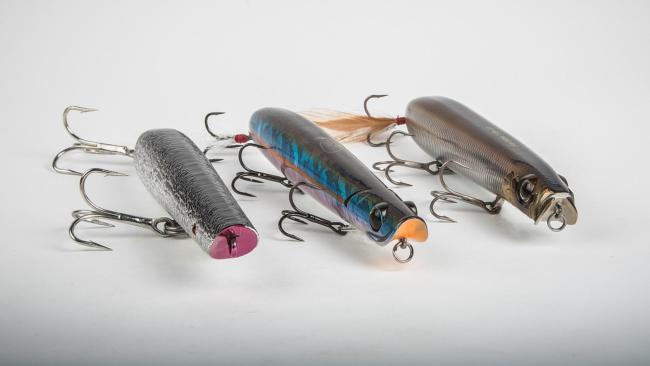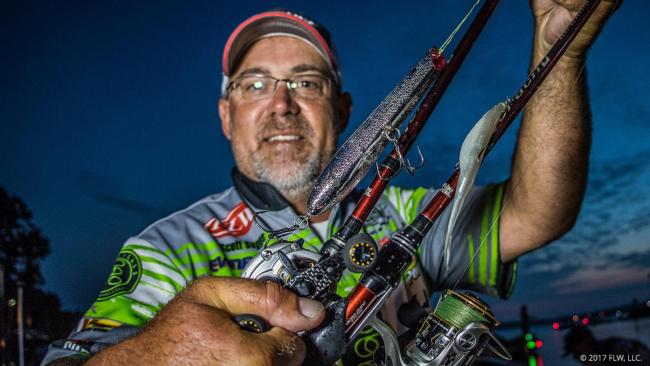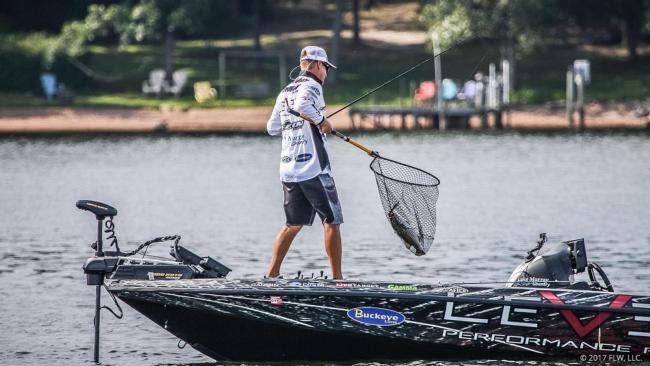Pencil Popper Basics
Breaking down this jumbo topwater plug

They’re big. They’re loud. And after the latest Forrest Wood Cup, they’re certainly not a secret anymore. Then again, for anglers in some areas of the country, pencil poppers were hardly a secret to begin with.
For those less educated on the big topwater baits, watching Justin Atkins use an ima Little Stik 135 to crush 22-plus pounds the final day of the Cup via FLW Live surely prompted them to run out and buy some.
So what exactly did they buy? After all, pencil poppers are not new. The original Cotton Cordell Pencil Popper has been a striper and inshore go-to for decades. And, in essence, they’re nothing more than giant, louder versions of the walking stick baits most anglers already have in their tackle boxes. However, when every one of the top 10 pros at the Cup mentions that he used a pencil popper to some extent, there’s clearly something about the bait worth noting.
We asked Anthony Gagliardi and Scott Suggs, two of those top 10 pros from this year’s Cup, what exactly made these large surface baits so indispensable at Lake Murray, and how to best use them on other bodies of water.
Longer, heavier and louder
Pencil poppers have been around for decades, but it’s best to identify what distinguishes a pencil popper – in the way these pros think of them – from any other walking bait.
The original Cotton Cordell Pencil Popper is a large, skinny popper (hence the name). It’s a long stick bait with a cupped mouth designed to be walked across the surface, spitting water as it does. By that definition, modern-day pencil poppers include the ima Little Stik 135 (and its big brother, the Big Stik), the Ever Green Shower Blows (SB), the Paycheck Baits The One and the Lucky Craft Gunfish.
The Gunfish may be a surprise addition to that list, but by the original definition – long, skinny walking bait with a cupped mouth – it is a pencil popper. However, most pros would classify it as simply a walking bait. The reason would be the size and weighting. When pros like Gagliardi or Suggs say “pencil popper,” they’re talking lures in excess of 5 inches and 1 ounce.
It’s also worth noting that there are many custom and semi-custom wooden pencil poppers available online and in regional tackle shops, particularly in the Northeast, where they’re popular lures for targeting stripers. So if your preferred modern version is sold out (ima Little Stiks vanished from online retailers in the wake of the Cup), there are other options available.
Bombing tools
The length/weight distinction of pencil poppers from other walking baits is important because of how they’re used. You’re not pitching these things up to cover or even walking them down the bank. They’re designed for bombing longer-than-normal casts and covering water.
In order to do that, you need the right gear. Namely, a long, strong rod and braided line. Suggs launches his on a 7-foot, 6-inch, medium-heavy Abu Garcia Veracity rod and 30-pound-test Berkley Trilene Professional Grade Braid. Gagliardi follows suit with a 7-10, medium-heavy Level rod and 50-pound-test Gamma Torque braided line.
“You need a long rod heavy enough to launch the lure as far as you can,” Suggs says. “The long rod, plus the ‘no stretch’ of the braid also helps with hooksets. The braid doesn’t affect the fish, since usually you’re fishing the lure so fast and targeting fish that are so active they don’t seem to mind.”
A big impression
Gagliardi will never forget his first encounter with pencil poppers roughly a dozen years ago.
Blueback herring had taken up residence in Lake Murray a few years prior, and anglers were finally beginning to figure out how they’d changed the fishing landscape. Among the tactics Gagliardi had been hearing about involved a pencil popper.
That May, former FLW Tour pro Jacob Powroznik stopped by to do a little fishing, and Gagliardi felt it would be a good opportunity to try out the large walking baits.
“It was unbelievable,” Gagliardi says. “I don’t know how many 7-pounders we caught that day.”
From that trip, he began to expand on the scenarios when the bait works best. Primarily, it’s a tool for imitating large baitfish, such as the blueback herring found in Murray or the large perch, suckers, smelt and alewives encountered in some Northern fisheries.
At the Cup this year, the offshore pros chasing blueback-eating bass used pencil plugs. However, the pros fishing close to the bank and up the river weren’t using pencil poppers. The reason is the bass in those areas were keying on smaller shad.
“I only throw pencil poppers on Lake Ouachita in late spring, when the shad are the biggest and the bass are looking for bigger meals,” says Suggs. “Come August, all the bait around here is small. Pencil poppers are just too big. But on Murray, or places where the bass are keying on bigger bait, they’re good choices.”
That said, while a pencil popper can occasionally be too big, it’s not always required tackle for when bass are schooling on bluebacks. In many instances, the fish will eat a “standard” walking plug just as well. Powroznik actually caught a 10-pounder on that first outing with Gagliardi using a regular plug, and Travis Fox caught one of his key fish the final day at the Cup on a Storm Arashi Top Walker. The key in both instances was they were close enough to the fish to reach them with the smaller, lighter bait.
Because of the unpredictable nature of the schooling activity many of the pros were keying on at the Cup, having a heavy pencil popper capable of reaching fish that came up busting far away was a distinct advantage. However, even Gagliardi admits that if he’s targeting specific cane piles typical on Murray and not necessarily schooling fish, he’ll go with a LIVETARGET Yearling Baitball Walking Bait – a more traditional walking topwater – just as often.
“Pencil poppers have their time and place,” says Gagliardi. “If you’re chasing schoolers, particularly if it’s a little windy and choppy, then they’re great. But if I only had one topwater for Murray, it’d be the LIVETARGET, not a pencil popper.”


